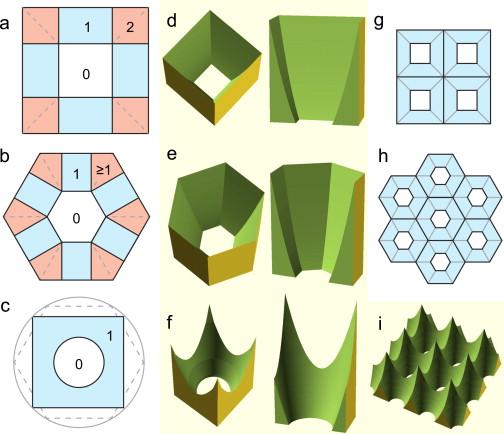Most of the “technologies of the future” that we’ve been seeing become highly studied and incredibly in-demand are those intended to enhance efficiencies and improve upon the availability and usage of energy, time, and money. These are among the chief reasons 3D printing has captured the limelight in fabrication–and that, on the energy side of the spectrum, solar power is being ever more embraced. We’ve seen the two brought together in applications as diverse as health care, motors, and space stations, all broadly with the goal of using additive manufacturing techniques to create low-cost, high-power solar capturing devices.
A new paper out of the Netherlands, published recently under a Creative Commons License, takes a strong scientific look at 3D printing to enhance the performance of solar cells by creating a light trap. Progress toward this end could create environmentally-friendly sources of energy, harvesting power from the sunlight through a 3D printed light concentrator to enhance the efficiency of solar capturing devices.
The paper, 3D-printed concentrator arrays for external light trapping on thin film solar cells, was authored by Lourens van Dijk, E.A. Pepijn Marcus, A. Jolt Oostra, Ruud E.I. Schropp, and Marcel Di Vece.
This particular study focuses primarily on efficiency, in that by optimal design and 3D printed light traps, the solar cells are able to trap the light in such a way that its energy is able to be concentrated and power conversion conducted at superior levels. As noted in the document, the study’s highlights include:
- We successfully 3D-printed a universally applicable external light trap.
- We demonstrated an improvement of the EQE of an organic solar cell up to 62%.
- The external light trap is made of a scalable array of concentrators.
- Our model demonstrates potential for more enhancement by external light trapping.
- A detailed technical pathway for further optimization is presented.
The most important part of the paper is in that first bullet point: successfully. By having already created on a small scale a functional system, they are now able to proceed to the next step, which is scaling up to larger solar panel systems.
“An external light trap consists of a parabolic concentrator and a spacer that redirects the photons that are reflected by the solar cell back towards the solar cell,” they write. “These retro-reflections enable higher absorptance and improved power conversion efficiency. … The 3D-printed traps were placed on top of an organic solar cell which resulted in a significant enhancement of the external quantum efficiency…”
In their process, the team examined the use of an external–rather than the currently more often deployed internal–method of light trapping for thin solar cells, which perform optimally in array settings, based on parabolic design and created using . The external, 3D printed light trap has further benefits in that it is an add-on to a solar cell, thus adding to, rather than recreating, the proverbial wheel.
 The figure at left illustrates the team’s approach to concentrators and their arrays, including the square, hexagonal, and circular designs. The 3D printed parabolic element concentrates the light, reflecting it to the solar cell, which is covered with a reflective (silver) coating, granting “a higher probability for a photon to be absorbed.”
The figure at left illustrates the team’s approach to concentrators and their arrays, including the square, hexagonal, and circular designs. The 3D printed parabolic element concentrates the light, reflecting it to the solar cell, which is covered with a reflective (silver) coating, granting “a higher probability for a photon to be absorbed.”
The team followed up with the conclusion that:
“We demonstrated that external light trapping is of interest for all solar cells as its effectiveness does not depend on the refractive index or texture of the solar cell and it is easy to apply. As the device is an add-on it guarantees that there is no negative impact on the electrical properties of the solar cell. … The use of 3D-printed light traps with a square, hexagonal and circular parabolic concentrators resulted in a significantly improved EQE of an organic solar cell.”
 The full paper is available on ScienceDirect for further information and more in-depth details. Let us know what you think of this approach to solar energy harvesting in the 3D Printed Light Traps for Solar Cells forum thread at 3DPB.com.
The full paper is available on ScienceDirect for further information and more in-depth details. Let us know what you think of this approach to solar energy harvesting in the 3D Printed Light Traps for Solar Cells forum thread at 3DPB.com.
Subscribe to Our Email Newsletter
Stay up-to-date on all the latest news from the 3D printing industry and receive information and offers from third party vendors.
You May Also Like
Precision at the Microscale: UK Researchers Advance Medical Devices with BMF’s 3D Printing Tech
University of Nottingham researchers are using Boston Micro Fabrication‘s (BMF) 3D printing technology to develop medical devices that improve compatibility with human tissue. Funded by a UK grant, this project...
3D Printing Webinar and Event Roundup: April 21, 2024
It’s another busy week of webinars and events, starting with Hannover Messe in Germany and continuing with Metalcasting Congress, Chinaplas, TechBlick’s Innovation Festival, and more. Stratasys continues its advanced training...
3D Printing Webinar and Event Roundup: March 17, 2024
It’s another busy week of webinars and events, including SALMED 2024 and AM Forum in Berlin. Stratasys continues its in-person training and is offering two webinars, ASTM is holding a...
3D Printed Micro Antenna is 15% Smaller and 6X Lighter
Horizon Microtechnologies has achieved success in creating a high-frequency D-Band horn antenna through micro 3D printing. However, this achievement did not rely solely on 3D printing; it involved a combination...





























